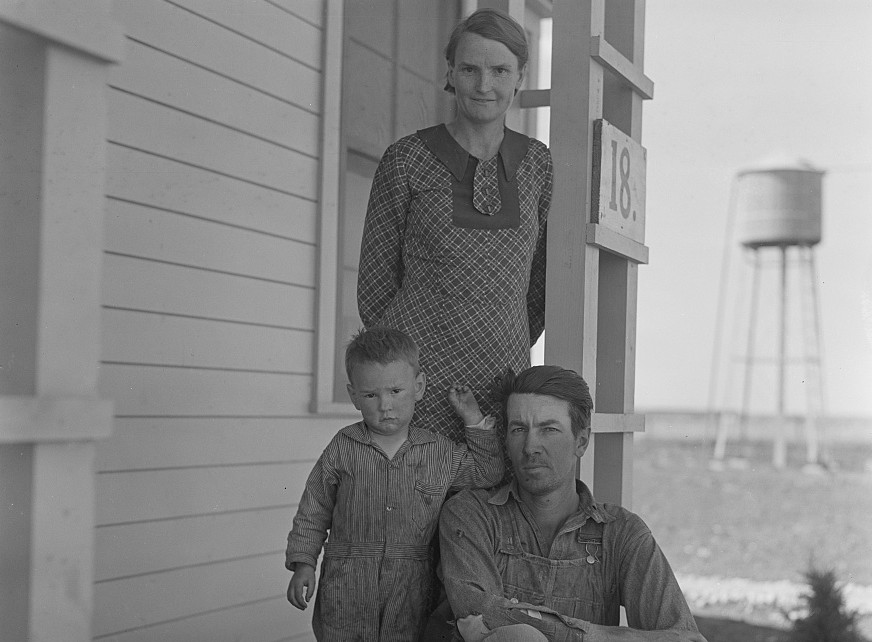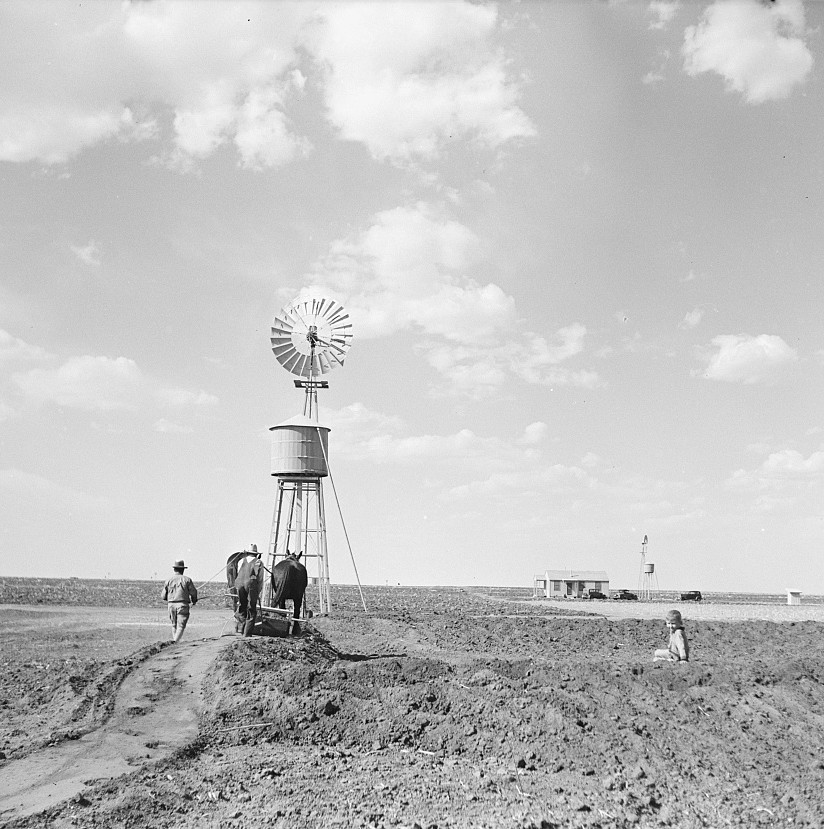Ropesville is a city in Hockley County, Texas, United States. Ropesville, The Ropesville Resettlement Project began in 1934 in conjunction with Franklin D. Roosevelt’s Federal Emergency Relief Administration and the community exists to this day.
Resettled family, formerly renters. Ropesville rural community, Texas by photographer Arthur Rothstein in April 1936
Resettled farmer terracing part of his 120 acre farm. Ropesville rural community, Hockley County, Texas by photogrpaher Arthur Rothstein April 1936
The project eventually encompassed more than 16,000 acres divided into eighty-one farms of 140 to 160 acres to grow cotton, sorghums, and other crops. In 1943 federal funds in support of the project were transferred to the war effort, and participating farmers were allowed to purchase the land they worked. Seventy-six farms resulted, ranging in size from 146 to 300 acres.
Ropesville increased from a population of 500 and fifteen businesses in 1930 to a peak of 950 residents and forty-eight businesses in 1965. By the late 1980s it had a population of 500, nine businesses, and a post office. In 1990 the population was 494. The population was 517 in 2000.
“Do you need some help in your genealogy search? Save time and avoid pitfalls in your research with this inexpensive book.“
Ropesville’s was the first settlement of Hockley County, developed when the Spade Ranch opened for colonization in the early 1900s. Early homesteaders were led into the area by Jim Jarrott in 1901. Later, when the South Plains and Santa Fe Railroad Company ran a line from Lubbock to Seagraves, the company agreed to build stock pens, switches, a section house, and a depot on land donated by Isaac L. Ellwood of the Spade Ranch.
Constructing an earth tank. Ropesville rural community, Texas by photographer Arthur Rothstein April 1936
Resettled farmer and wife. Ropesville community, Hockley County, Texas by Arthur Rothstein April 1936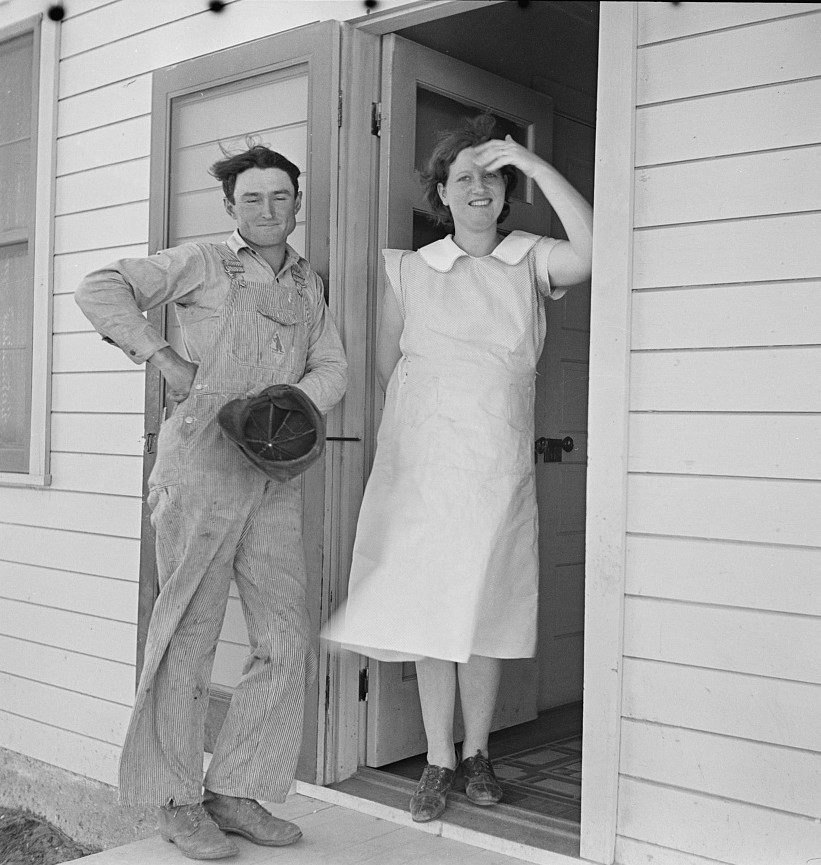
One of the thirty-three new houses. Ropesville rural community, Texas by photographer Arthur Rothstein April 1936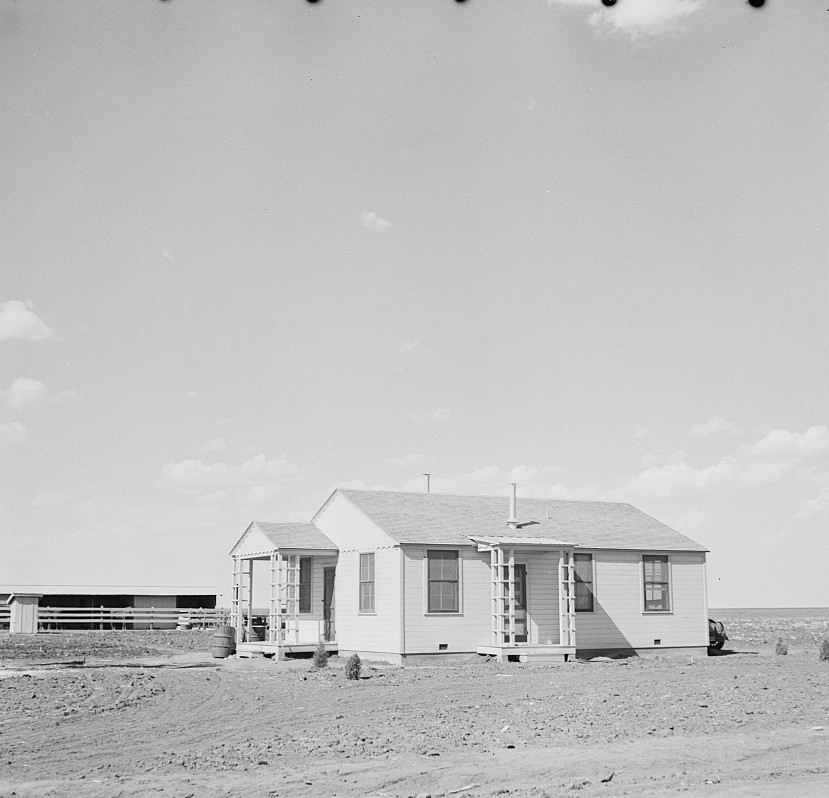
Project manager with bags of kaffir seed grown by resettled farmers. Ropesville rural community, Hockley County, Texas by photographer Arthur Rothstein April 1936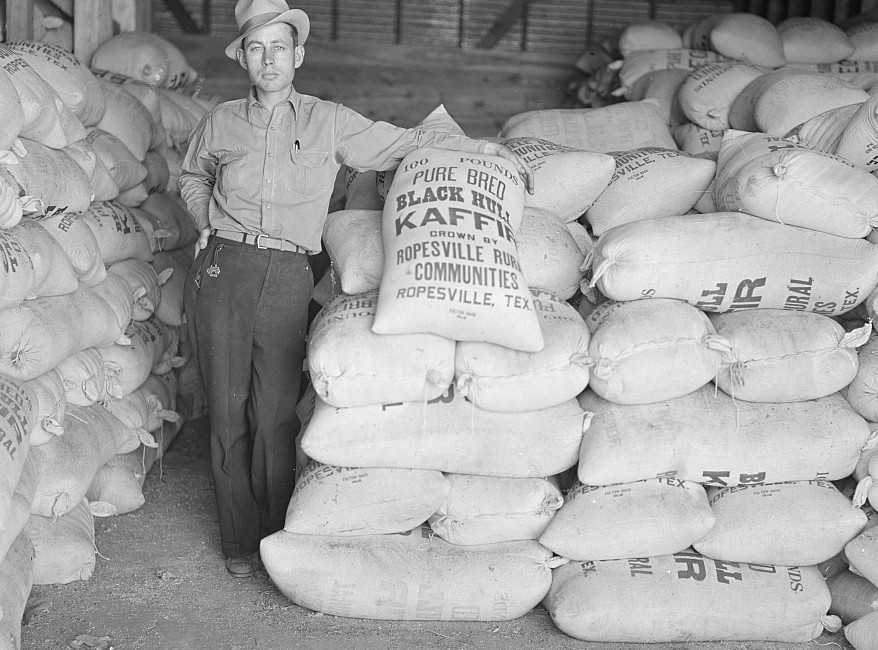
Kaffir corn stubble breaks up the wind currents and prevents soil from being blown away. Hartley County Texas by photographer Arthur Rothstein April 1936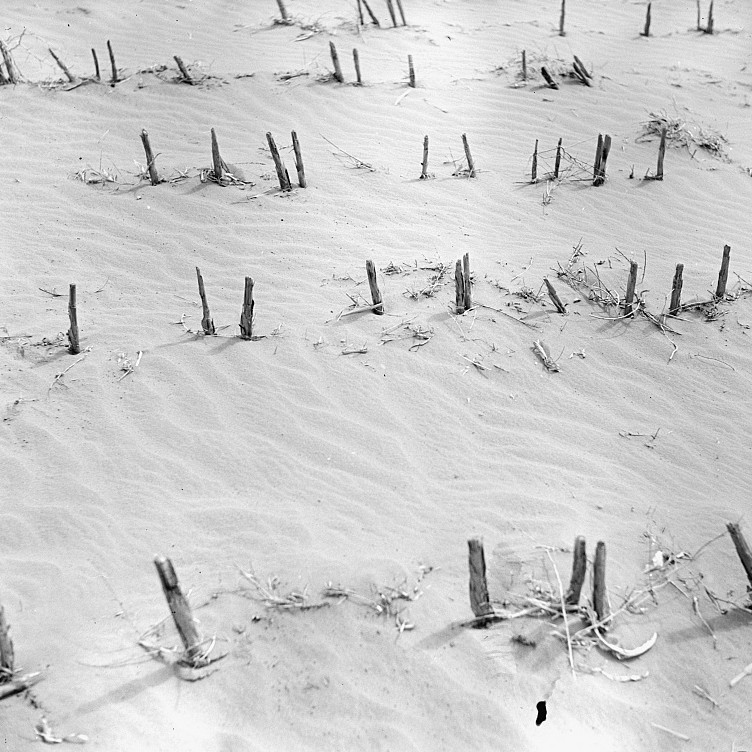
The Spade cowboys who constructed rope corrals to hold cattle for shipment wanted to name the depot Ropes, but the name was rejected by the post office officials since it was similar to another Texas settlement called Ropers. The name Ropesville was submitted and accepted. The depot still displays the name Ropes and is now a permanent part of the Ranching Heritage Center in Lubbock. The actual townsite was laid out in 1917, the same year the Ropes school district was established.
Ropesville Farms, Texas, April 1936. United States Resettlement Administration rural rehabilitation project. One of the thirty-three homestead units by photographer Arthur Rothstein April 1936
Did you know that religious persecution occurred in early America? Read about it in the Tapestry of Love historical series by Alabama author Donna R. Causey
Three complete historical novels for $14.97! Tapestry of Love Historical Series 2nd edition 2015 –
Court records dating back to the 1630s create historical accuracy as the reader is taken back to the primitive days of colonial Virginia and Maryland where the Pattendens encounter life-changing difficulties with Indians, ducking stools, illness, massacres, death, loneliness, love, and greed.
READER REVIEW OF RIBBON OF LOVE: 2nd edition – A Novel of Colonial America Book one: The exhilarating action and subplots keep the reader in constant anticipation. It is almost impossible to put the book down until completion. – Dr. Don P. Brandon, Retired Professor, Anderson University
